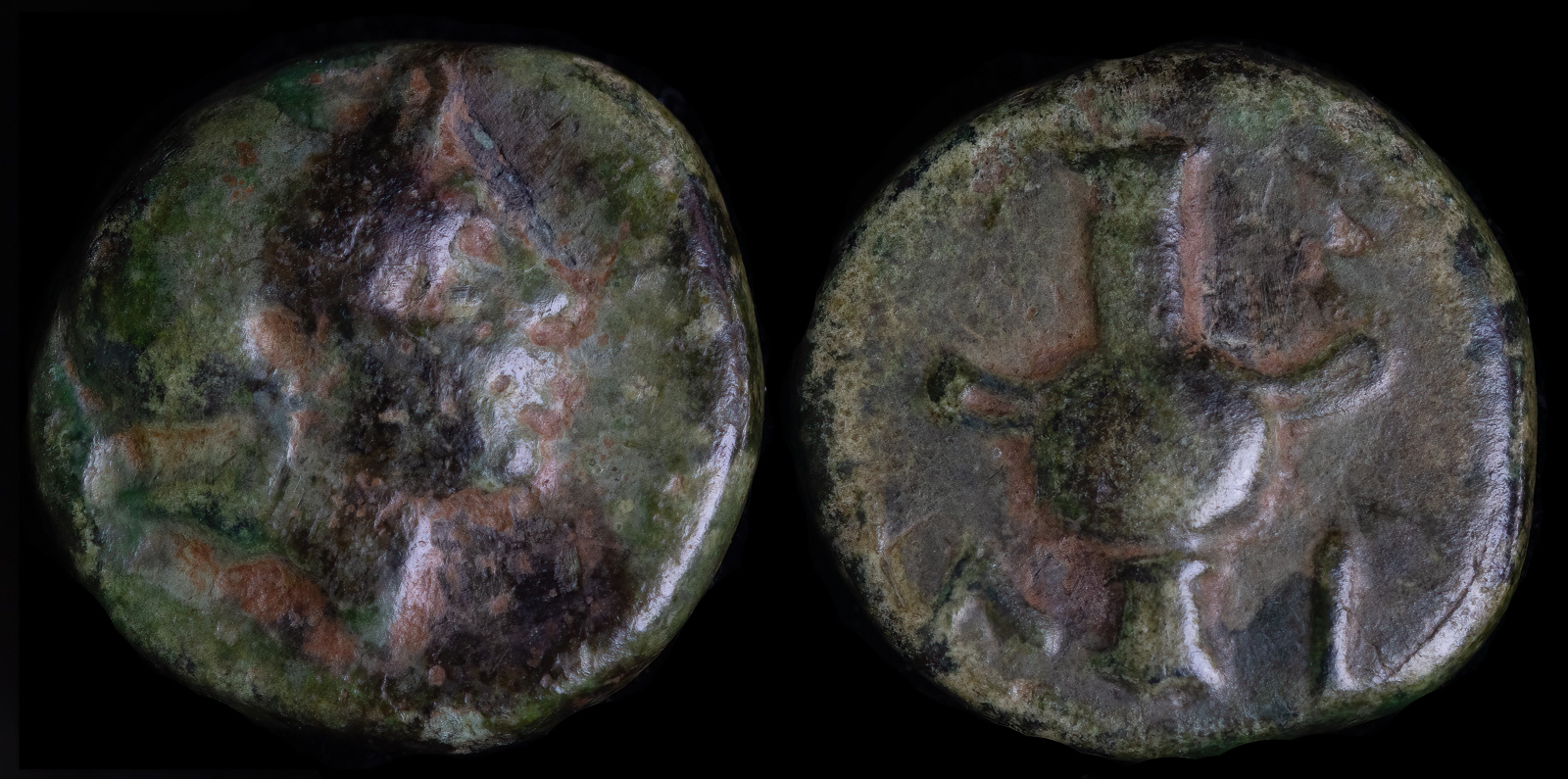
Troas, Ilion (Troy)
301-281 BCE
AE 9mm 0.81g
Helmeted head of Athena right, wearing crested Attic helmet decorated with a wreath /
IΛ-I; hydria.
Bellinger T3; SNG Cop 346
Perhaps no other city evokes so much emotion and history as Ilion, better known in English as Troy. Nearly every Greek legend has some connection to it.
So famous was the ancient city that even during Hellenistic times it was a tourist attraction. Alexander the Great himself made a point of visiting it. The tour was more than personal, since he wanted to forge a connection between the two invasions and, more importantly, between himself and Achilles.
Alexander paid homage at Achilles’ tomb and took part in the Greek traditions of anointing himself with oil and running naked with his companions. He also made the city exempt from taxes and supposedly at the end of his life promised to rebuild the temple to Athena as the largest in the world.
After his visit, the city increased in prominence. The city at that time was more of a blip that sufficiently annoyed modern archeologists by reusing the stones from important buildings that remained from the famed siege of troy for their own projects.
One of those buildings was a temple to Athena, who is depicted on the obverse of this coin. This temple was built roughly when this coin was minted and severely damaged the site of ancient Troy.
This coin was minted during the period when Ilion was under the control of Lysimachos.
The area around Troy is first settled.
Troy is already a small fortified city.
Troy I destroyed by fire. Troy II is built.
Final destruction of Troy II. Troy III is constructed.
Troy VI is constructed, which may be considered the most powerful Troy.
Troy first appears in Hittite records as ‘Wilusa’.
Troy VI is destroyed by what is believed to be an earthquake.
Troy VIIa is destroyed by an enemy attack, perhaps that described in the Iliad.
Troy VIIb heavily damaged by an earthquake.
Troy VIIB is destroyed by fire.
Greek immigrants begin rebuilding around Troy.
397 BCE
Deryklidas of Sparta supports the Ionian Greeks against the Persians. He besieges Atarneos for eight months until they accept his terms and takes Hamaxitos, Kolonai, and Ilion. This ends in an armistice with Pharnabazos.
Alexander the Great crosses from Sestos to Abydos. He then visits Troy and returns to Abydos. On his way, he sacrifices at the tomb of Achilles at Achilleion.
A new theater is built at Ilion.
Around this time, Lysimachos combined Achilleion with other communities around Ilion.
Attalos attacks the forces of the usurper Adaios and defeats him, then engages in friendly negotiations with Lampsakos, Alexandria Troas, and Ilion, all of which had remained loyal to him.
Gauls invade the Troad and besiege Ilion. Alexandria Troas dispatches an army of 4000 and relieves the siege.
Ilion is destroyed by Sulla.
Ilion suffers an attack by pirates.
Ilion sides with the Roman general Lucullus against Mithridates VI.
Pompey rewards Ilion for its loyalty.
Julius Caesar bestows benefactions on Ilion.
Augustus visits Ilion.